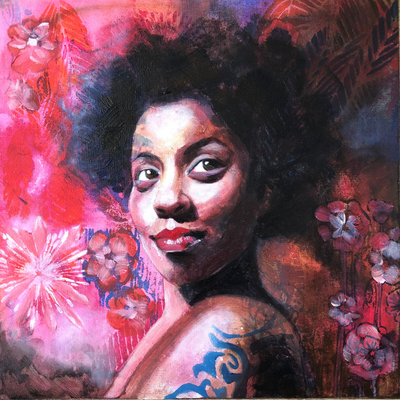Can you use gouache with watercolor?
Have you tried painting with gouache and watercolor? Both mediums look very similar, but they behave differently. I’ve done a lot of experiments with both of them.
It’s easy to use gouache with watercolor once you know the basics of it. Here are three ways to do it, with my best tips for success!
Adding gouache on top of watercolor
Using gouache can be fantastic for adding color and dimension to your watercolors, but you need to plan. Watercolor comes first, it will make transparent layers, and then gouache comes on top of watercolor, covering the transparency. If you place watercolor on top of the gouache, you’ll risk lifting the layer below.
Playing with transparencies
You should place your gouache in less transparent areas. For example, you might want to use gouache where you want to add contrasting details or where you want a darker tone. You can also use gouache to paint over areas you’ve already painted with watercolor, adding missing colors or elements.
You can use gouache in a semi-opaque consistency, letting the watercolor shine for more interest. Then build the third layer on top with opaque gouache. This works very well for flowers, bouquets, or landscapes. You can also play with different colors. You can add them to create a secondary color or use a variety of colors and make sure they’re compatible. For example, you might want to paint your flowers with a mix of red and blue for purple petals, then add green gouache over the top for leaves.

Painters can use gouache to cover up mistakes and add highlights or shadows on top of their watercolor paintings. The most important thing is to plan what you want the final effect to look like before starting!
Watercolor as underlayer
You can place a layer of watercolor on your paper before applying gouache. This will create a layer for the paint to grab on and give a cohesive look to your final art. You can use ink or acrylics as underlayers as an alternative to watercolor, giving you the option of using gouache on top of any medium.

White gouache with watercolor
You can add white to your mix of watercolor to give it more body, to change the color and the opacity. Sometimes you’re looking for a specific color that you can’t get without white gouache. Try adding white gouache to your watercolor, then layer the gouache over it. This will create a nice creamy texture with exciting highlights and shadows.
This is easy to do if you carry a tube of white gouache with your watercolor supplies. Great also to paint on colored paper and have a contrasting color.
Highlights
You can also use white gouache to add highlights. You can play with consistencies:
- placing a bit of white gouache in the wet watercolor and let it fuse
- putting a thin layer of white gouache on dry watercolor
- placing a thick layer to enhance the highlight and give it more body
Conclusion
It’s easy to use gouache with watercolor, and it’s a great way to add depth and richness to your work. It can be a single touch of white gouache to a more opaque work. Anyway, I always have a tube of white gouache in my watercolor palette!
You can watch this video to see gouache and watercolor used together:






